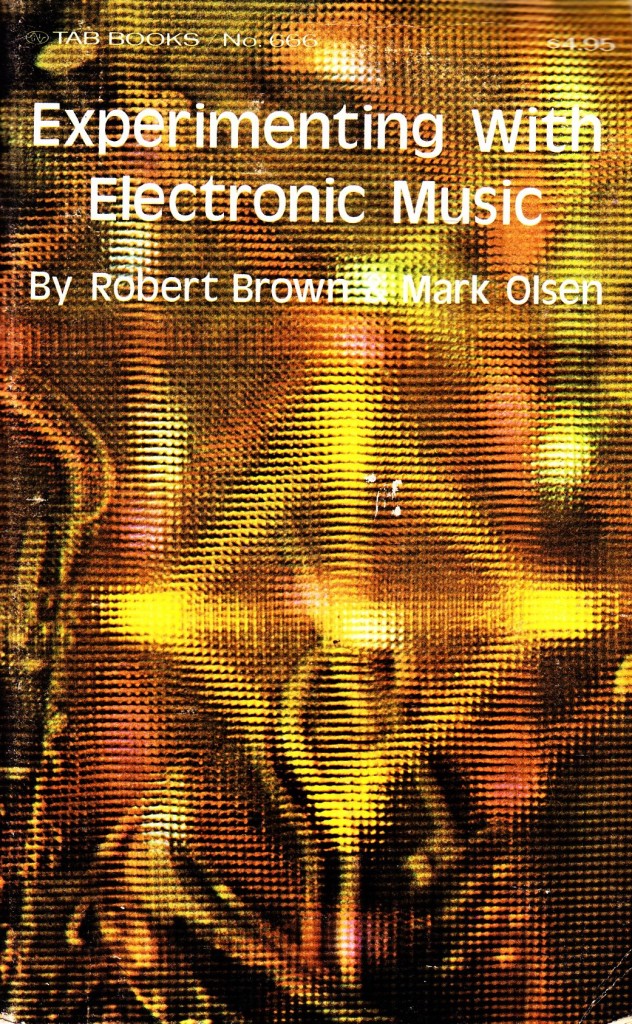 In NYC in the mid-seventies, an electronic-based band arose amongst all the guitar punks, a band that was known as much for their confrontational post-beatnik vocals as for the strange and intense sounds that emanated from their famously homemade electronic sound equipment. A band who has become, in the decades since, one of the few acts that is truly ‘required reading’ in the lexicon of avant-garde rock n pop. Or, as James Murphy so brilliantly puts it in his apocryphal tale of musical uber-taste, “I was there, in 1974, the first Suicide practices in a loft in New York City… I was working on the organ sounds…with much patience” (skip to 2:50… or, actually, don’t… this song kinda rules).
In NYC in the mid-seventies, an electronic-based band arose amongst all the guitar punks, a band that was known as much for their confrontational post-beatnik vocals as for the strange and intense sounds that emanated from their famously homemade electronic sound equipment. A band who has become, in the decades since, one of the few acts that is truly ‘required reading’ in the lexicon of avant-garde rock n pop. Or, as James Murphy so brilliantly puts it in his apocryphal tale of musical uber-taste, “I was there, in 1974, the first Suicide practices in a loft in New York City… I was working on the organ sounds…with much patience” (skip to 2:50… or, actually, don’t… this song kinda rules).
So yeah I am talking about Suicide. If you don’t know ’em, check ’em out… it is amazing+terrifying that this record came out in 1977… truly truly AOTT. And plainly awesome too. I really love this band, and they inspired me greatly in the early 2000s, when I was performing with a punk band in Brooklyn using an analog drum-machine rig based around some old Roland beatboxes, voltage controlled filters, and a CV-generating homemade theremin to control the whole thing.
LISTEN: The_Flesh_Gallows
This felt fairly fresh to me in the year 2001; so that fact that Suicide was doing this same thing 25 years early was mindblowing. I had to wonder; how the hell did these guys make all the stuff? Even in the year 2000, DIY’ing synth equipment was fairly unusual for rock musicians; but in 1975? That was like black magic! Well I think I found the grimoire.
NEways… kinda a long setup to what will be… the first OUT OF PRINT BOOK REPORT we’ve had in a while. And oh boy will there be more coming. I was recently at a really fascinating estate-sale somewhere in Marin County, California, where I met an elderly engineer who sold me a library of ancient audio-tech books and wished me luck on my travels… the pick of the litter was the above-depicted “Experimenting With Electronic Music,” by Robert Brown and Mark Olsen. Published in 1974, it is TAB books catalog number 666. No joke. This just keeps getting better.
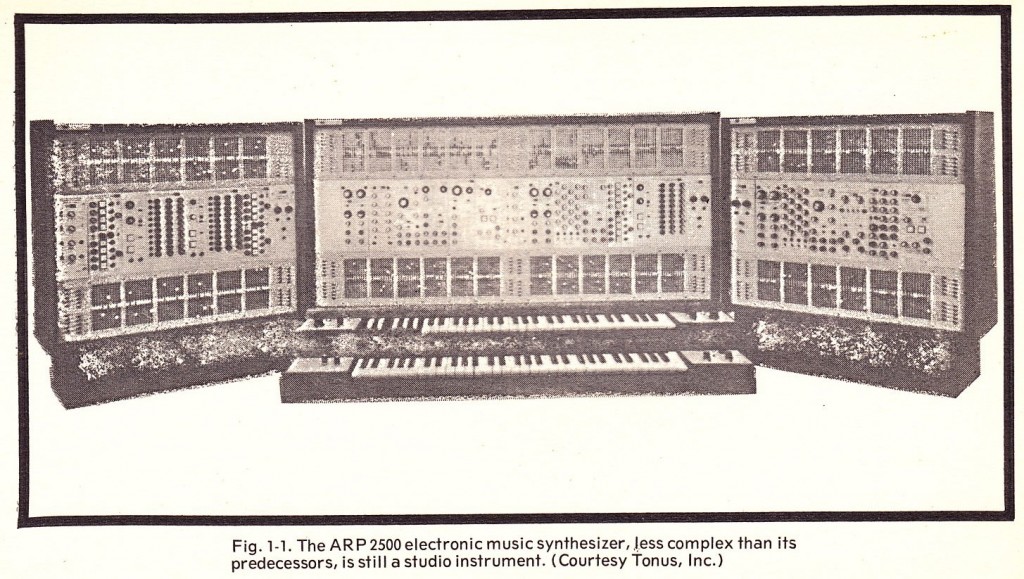 The book starts with some fairly uninteresting discussion of various commercially-available synthesizers circa ’74, but soon gets into a wealth of both schematics and ideas regarding DIY’d audio electronic circuits. Here’s the TOC:
The book starts with some fairly uninteresting discussion of various commercially-available synthesizers circa ’74, but soon gets into a wealth of both schematics and ideas regarding DIY’d audio electronic circuits. Here’s the TOC:
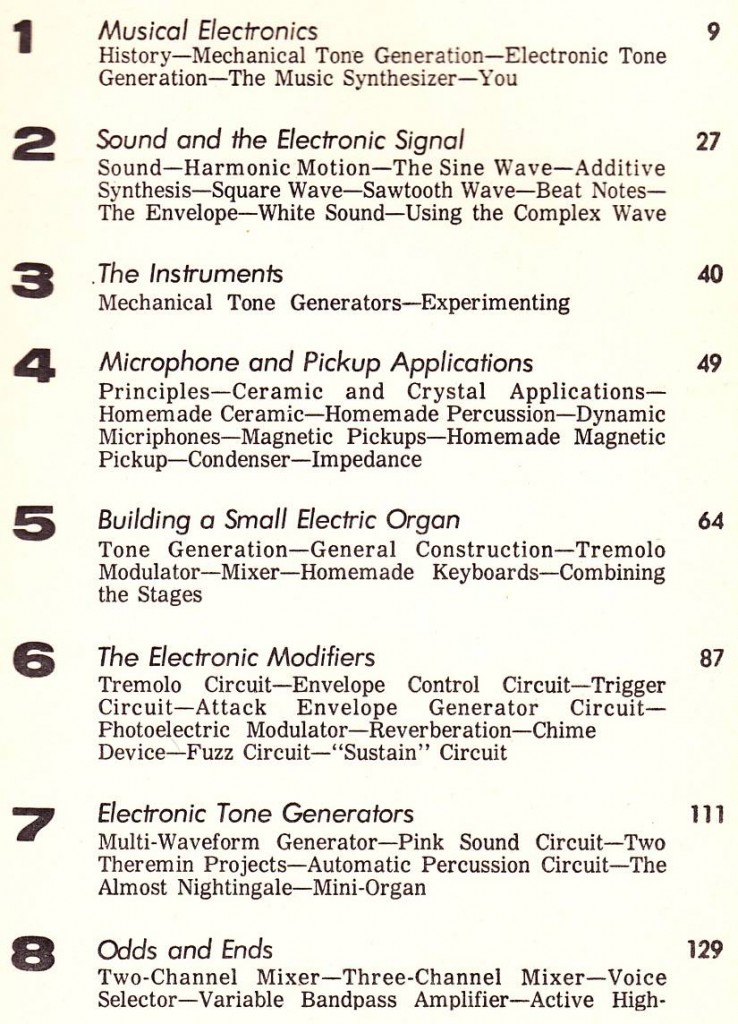 There’s a ton of great stuff in here, and while I honestly have no idea whether or not the particular transistors spec’d in these circuits are still available, I would imagine that there are subs available… even if you never build anything from the book, I think anyone with an interest in early electronic music will find it fascinating. Here’s a few projects that I plan to do at some point:
There’s a ton of great stuff in here, and while I honestly have no idea whether or not the particular transistors spec’d in these circuits are still available, I would imagine that there are subs available… even if you never build anything from the book, I think anyone with an interest in early electronic music will find it fascinating. Here’s a few projects that I plan to do at some point:
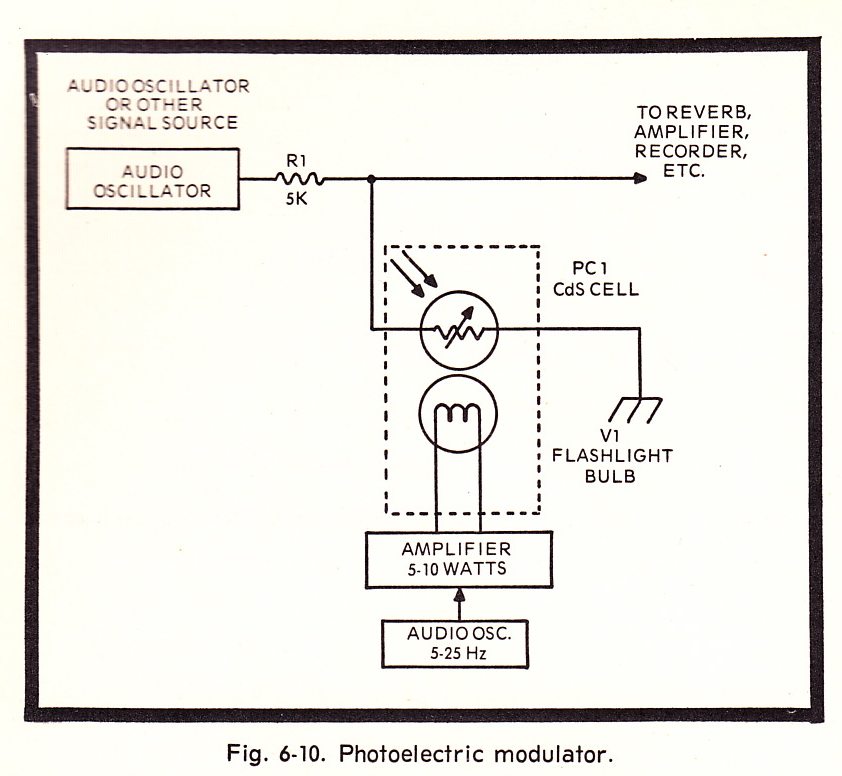
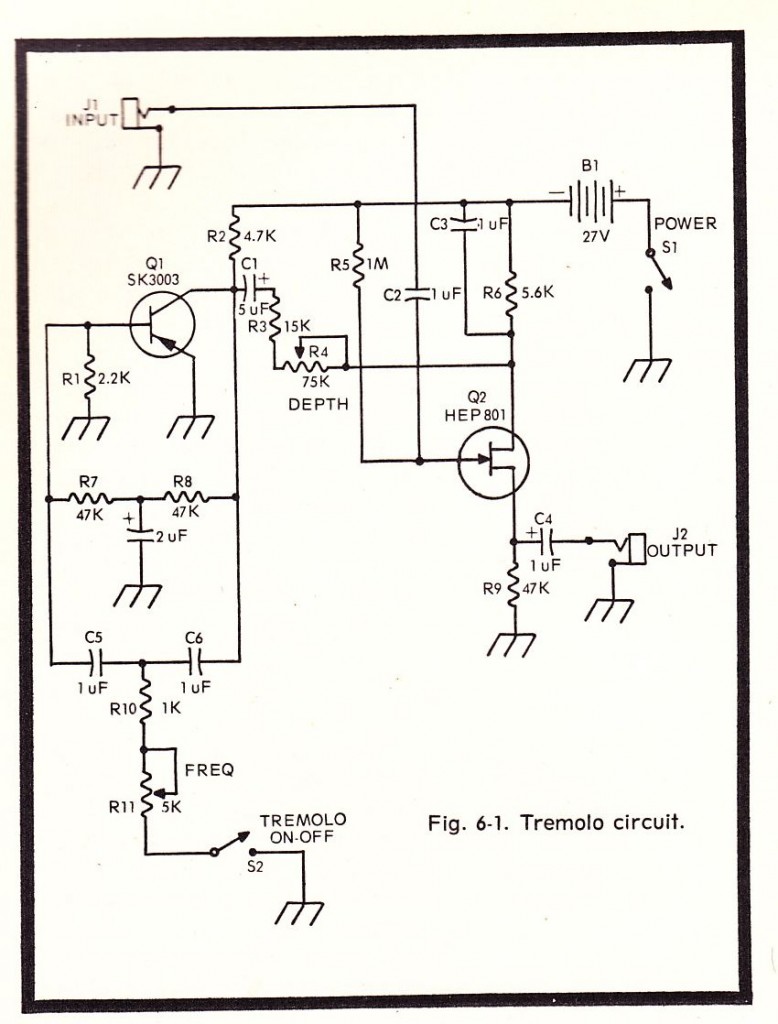
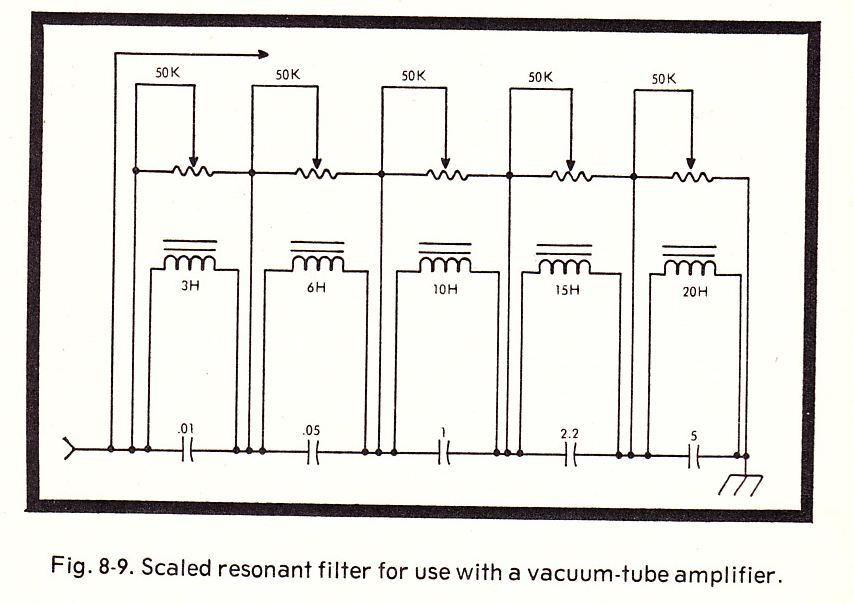 “Experimenting with Electronic music” is available from a few sellers on Abe Books. It ain’t cheap, but I’ve been digging for these sorta books for 20 years now and this is the first copy I ever came across.
“Experimenting with Electronic music” is available from a few sellers on Abe Books. It ain’t cheap, but I’ve been digging for these sorta books for 20 years now and this is the first copy I ever came across.
2 replies on “Suicide Manual”
The way to buy books like this is go on eBay and look under Books, Wholesale and Bulk Lots. A lot of times the seller will have a whole pile of these TAB/G-L (TAB was the successor to the Gernsback Library) books on everything from converting cars to diesel engines to sand casting to rebuilding aircraft engines, and you get the whole pile for less than one book. Many TAB books were sold through a book club deal.
Most TAB electronics books are poorly edited and several contain dangerous or erroneous info that can cause a newbie a lot of problems, but there are a few jewels in the pile. The best TAB author was probably Joe Carr who was either a very good writer or had his work edited before submission.
There’s a guy on eBay that buys piles of old electronics books cheap and sells them by putting them in the categories of the subject instead of under Books, then puts photos and flowery copy of their contents without putting the titles and authors in. It’s a scam because most of these books are worthless for DIYers despite his statements that they will enable them to do all the stuff he describes. I’ve turned him in a bunch of times with no results.
Also if you want to play with analog and early digital era beat boxes, rhythm machines and gazoopers, just get a few old Lowery organs from estate sales. Even the Lowery service manuals are informative and interesting to read. The gazoopers, as organ guys called the easy-play and rhythm machine features, usually separate from the rest of the organ (sic) pretty easily, and small component value changes often make them sound like rock and roll percussion instead of the treacly tones their geriatric customers preferred.